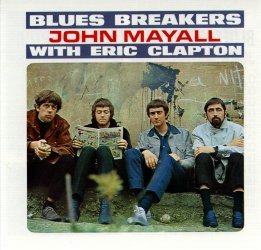As a VISTA Volunteer in 1966, I remember letting my hair grow so long that the South-Side Chicago kids I worked with called me "wolf-man." The hair was only half an inch longer than the regulation Kennedy/Princeton cut of my college years. I remember New York City in 1967 in all it's exuberant Hippydom. And I remember how ridiculous I felt in the first pair of bell-bottom jeans I bought (at the urging of my friend Alan, a slightly more adventurous cultural observer). I also remember London at the tail end of the decade, the outrageous gear on the backs of the young, Carnaby Street shops, small flats in Notting Hill Gate, mini-skirts, bell-bottom trousers, wide lapels and fat ties; not to mention the Brits' celebration of R&B.



Click images if you wish. The first one leads to a BBC article on demise of the mini-skirt in 1970.
Of course not everyone took to the new fashion. I had an office with Rex and Ian, publisher's representatives who specialized in the educational market in Africa. Rex wore a midnight blue, chalkstripe suit. It was his work uniform and I saw no other. He kept three of them and would order his tailor to make another when one was getting worn out. The cuffs were lined with leather to prevent fraying. Two years earlier, my major professor at U of Wisconsin, also an Englishman, had been the same, only he had three tweed sport jackets. I expect Eric Hobsbawm, my thesis advisor in London, followed the same practice, though the subject never came up.
Not having been brought up to bespoke tailoring, my wardrobe gradually did evolve. I bought a tight-fitted military tunic (mufti, not Guards' red) and still own a wide-lapel herringbone Harris tweed jacket bought then. Also a rather nice sheepskin winter coat, which, unlike the tweed, I still wear.
There it is: I still wear a garment bought 35 years ago. The following essay is about the tawdry dressing habit of academics. But I see it more as an essay in conservation.
From: The Common Review
extracts:
Look at us. Glance around a room at a professional meeting: we look like refugees. And not refugees from an interesting culture. Refugees from Scarsdale in 1983 or from Boise in 1994. ... [O]ne long for the days when scholars wore robes. After all, the students we teach are not about to tell us if we are dressing like morons. [They, the] sublimely fit gazelles who sit restless in our classrooms can wear cargo pants and look acutely gorgeous. Whereas if we wear cargo pants, we look like cargo.
Why is how we dress important, after all? We're busy with texts, not with textiles. We pride ourselves in saying, along with Hamlet, "I know not seams," winking at the homonym, as if to say we know better than to mistake fripperies for fundamentals.
From Volume 2, Number 3 of The Common Review. No part of this material may be reprinted without the permission of The Common Review and the author. © 2003 by The Common Review.
============================
See also:
Selling Us
The Emperor's New-Tech Clothes
By Margaret Webb Pressler
Washington Post Staff Writer
Sunday, September 19, 2004; Page F01
extracts:
The developments in clothing performance are the result of chemists and engineers getting involved in fabric treatment on the molecular level. ... Creating a stain-resistant shirt means fusing molecules of water-resistant chemicals to the actual fibers of the fabric, giving it an almost creepy ability to deflect any kind of liquid.
At the same time, molecules of anti-microbial substances might be attached to those same fibers, preventing the growth of odor-causing bacteria. Meanwhile, other chemicals, weaves and treatments can make that same shirt pull moisture away from the body and release it, so sweat evaporates more quickly.
And, voilà -- you have a shirt that doesn't stink or show sweat marks or evidence of this morning's breakfast disaster. [This clothes tech has sales appeal.] Shoppers have demonstrated a willingness to pay more for performance is going to be the main driver behind the growth of functional apparel. Retailers believe they may finally have found a way to get customers to pay full price for their clothes again. Unlike the old Alec Guinness movie "The Man in the White Suit," in which the invention of a never-needs-cleaning-or-ironing fabric sends the apparel industry into a tailspin, the clothing and retail worlds today are positively giddy about the real-life possibilities that technology is offering to an age-old business.




No comments:
Post a Comment